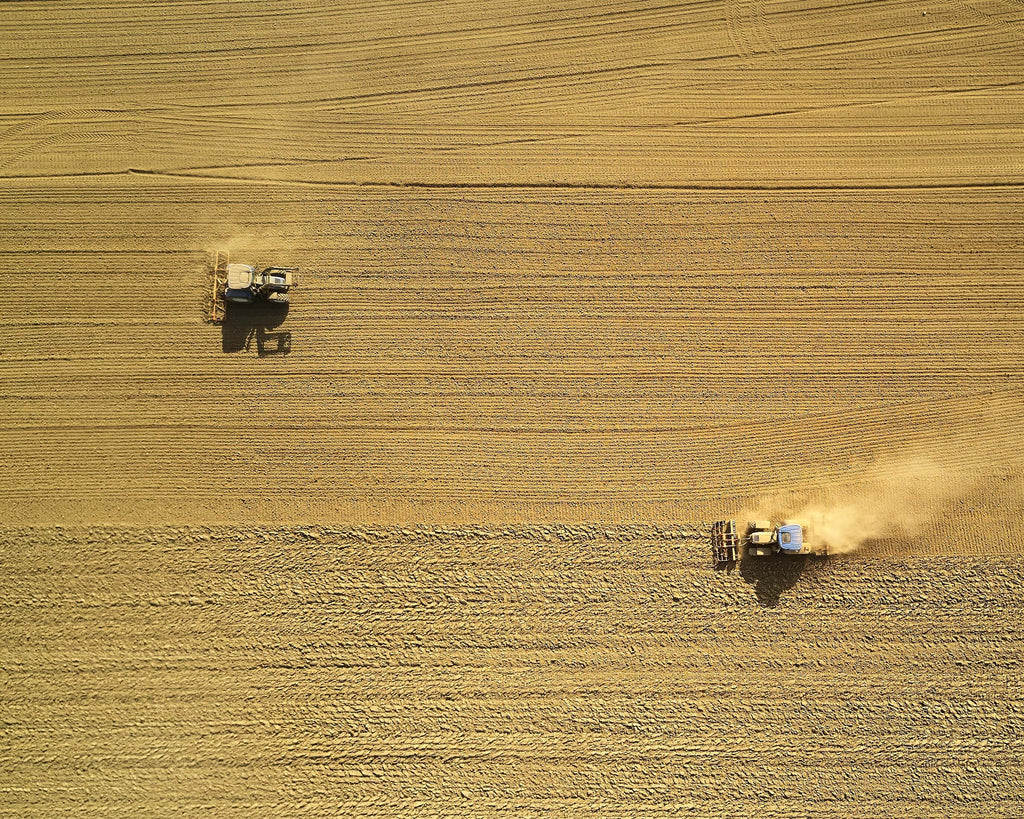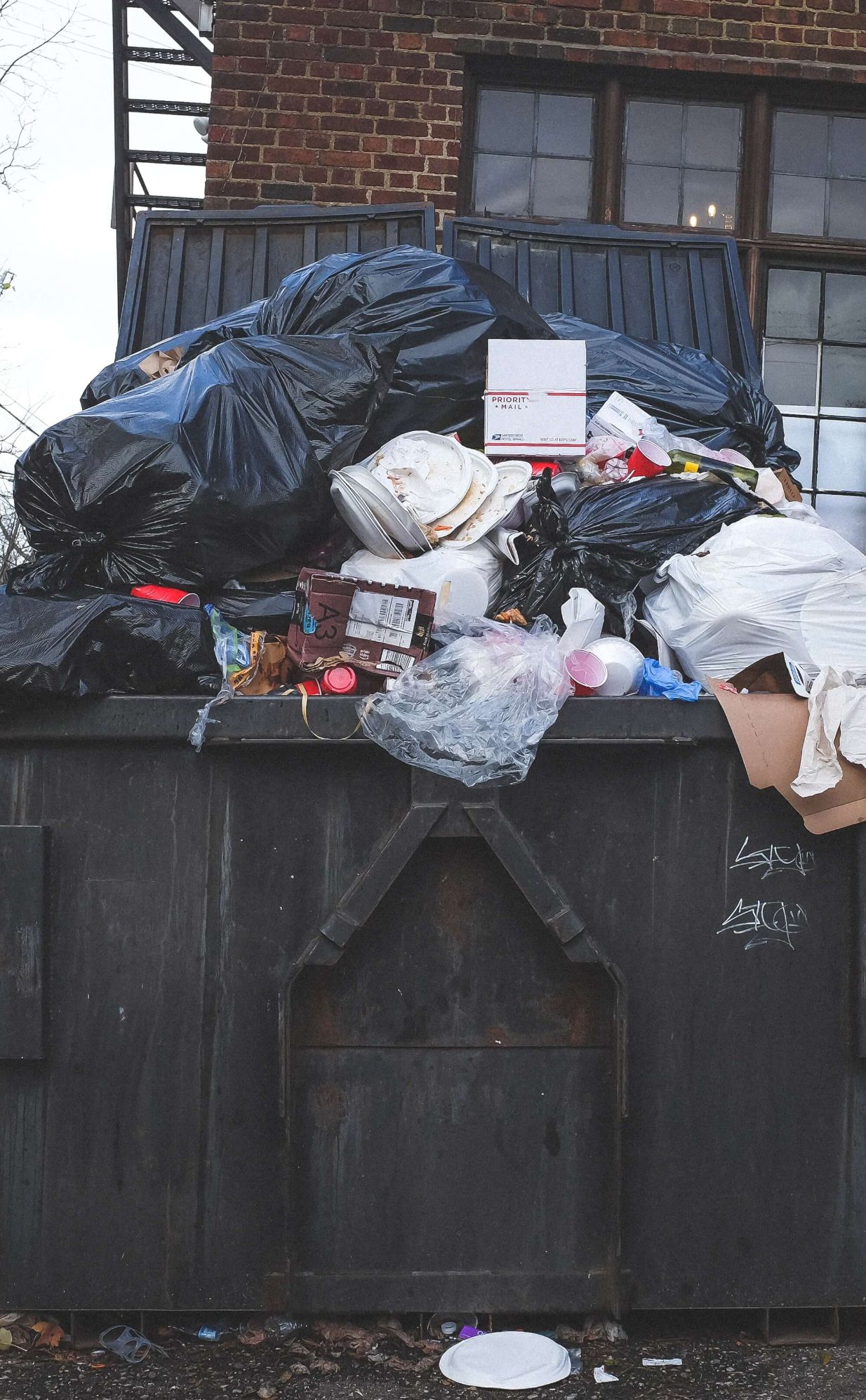From Farm to Home & Restaurant: Food Waste Facts
Food waste has serious implications for public health and the environment. Learn the facts on food waste, a...

There are currently 7.5 billion people on planet Earth, and this number is steadily increasing. Competition for resources, such as water and land, will risk future food supplies meeting demand. But some scientists have found a pretty simple solution: insects.
There are currently 7.5 billion people thriving on good ol' planet Earth. This number is steadily increasing, even at this very moment. As a matter of fact, by 2045 the human population is predicted to reach 9 billion people! The bulk of the population boom will occur in developing countries within Africa, South America, and East Asia.
Can you imagine?
1.5 Billion more people driving gas guzzlers for transportation.
1.5 Billion more people paying insane rent prices just to have shelter.
Also, 1.5 Billion more mouths to feed.

Take, for example, the United States. According to the Center of Diseases, Control, and Prevention, 39.8% of Americans over the age of 20 are obese. There are also 11.8 % or 15 million people facing food insecurity. This is due to an unequal consumption of food.

It will get much worse.
Competition for resources, such as water and land, will risk future food supplies meeting demand. Currently, agriculture uses 40% of land and 70% of freshwater globally. As a result of the ever expanding human race, more land and fresh water will be required for livestock and agriculture. Through land clearing and displacement of natural habitats, new land and fresh water will be obtained. Both will have detrimental effects to Earth’s biodiversity, as well as an increase in greenhouse gas emission. At the moment, 25% of greenhouse gas emissions are due to agricultural expansion practices such as clearing land, fertilization of soil, and crop production in general.
There is also the matter with climate change.
Remember those nasty emissions? Well, greenhouse gas emissions like carbon dioxide, nitrous oxide, and methane are harming the Earth’s ozone layers, which in turn is causing Mother Earth to go a tad haywire. Animal sources of food, namely eggs, milk, and meat, contribute to these greenhouse gases. In fact, a study out of the United Kingdom found that consumption of animal protein produces 2.5 times more greenhouse gases compared to a vegan or vegetarian diet.
The variable changes in climate will also cause forecasts in agriculture rotation and livestock feedings to be nearly impossible. Areas that have never been humid will suddenly receive floods. Droughts will drive people out of lands that have been plentiful for decades. The new temperatures will also invite parasites and infectious diseases to decimate livestock in already struggling regions.
Warning: This is not the sequel to A Day After Tomorrow. This is our future.
There is also a link between the economy, industrialization, and exports. Once industries like manufacturing gain traction, agriculture gets left in the dust. The farmers that survive industrialization, do so by exporting commodity foods, which is great for a country’s economy. Developing countries rely on producing money through commodity exports or resorting to overfishing. On the other hand, a decline in farming and crops equates to a decline in a country’s self sufficiency. For example, in recent decades exports of African staple crops has decreased their self sufficiency ratio from 120 - 105 %. The self sufficiency ratio is the amount of commodity food a country can produce after imports and exports occur. Therefore Africa’s self sufficiency ratio decreasing by 15 points in recent decades means that its agriculture is less self sufficient.
 Food self-sufficiency ratios for cereals and starchy roots, 2007–2011.
Food self-sufficiency ratios for cereals and starchy roots, 2007–2011.
Source: FAO Food Balance Sheets, 2007–2011 data for cereals and starchy roots by volume produced, imported and exported
The effects of population growth will be even worse for those countries that aren’t self sufficient. Thankfully, scientists are already recommending possible solutions.
Researchers from INRA in France and Government of Science in the United Kingdom have investigated answers to food insecurity from the future population boom. Most of the resolutions are pragmatic like the INRA’s suggestion to enforce caloric restrictions and limited animal products - mostly through restriction or reduction of food waste. Interestingly enough, the United Kingdom proposed sustainable agriculture, a global food system, and embracing technology to end hunger. There was a short summary within the Government of Science’s report, focusing on positives of genetically modified crops and utilization of cloned animals for meat. Regardless, both reports concluded more research into future public policies should be explored before the human race relies on cloned meat for sustenance.
With unequal distribution of food and erratic weather, nutritional deficiencies and famine may end up decimating entire populations in developing countries. The search for a global sustainable food system that will provide adequate nutrition
have left scientist's stumped. Except researchers from the Food Agriculture Organization of the United Nations. Their solution is pretty simple:
insects.
Besides the sheer number of the insect population, insects also provide essential
protein and nutrition to the human diet.
Researchers in India even theorized that popularization of insect consumption would decrease protein malnutrition in countries or at the very least lessen the need for animal protein. This means when livestock begins dying from a sudden
drought in an area, insects could fill the burden of a town facing possible protein malnutrition and famine.
In fact, bugs have more fat, sodium, and minerals compared to certain livestock. Bear in mind, the excess nutrients are a resource to combat under-nutrition, not obesity related problems. When the unequal distribution of food becomes even greater with the increase in population, maybe snacking on a few roasted crickets will be the answer to a few nutritional deficiencies.
Guess what? Eating those creepy crawlies may even lessen greenhouse gas emissions caused by livestock. When comparing the greenhouse gas emissions produced by livestock and an equal weight of insects, researchers found that insects still produced less greenhouse gases. Additionally, insects require less land and feed compared to raising livestock. The best part is insect rearing is cheap. In a report titled, Edible Insects - Future prospects for food and feed security the Food Agriculture Organization of the United Nations stated, “In developing countries, some of the poorest members of society, such as women and landless dwellers in urban and rural areas, can easily become involved in the gathering, cultivation, processing and sale of insects. These activities can directly improve their own diets and provide cash income through the selling of excess production as street foods.”
We know the solution, so what do we do about it?
Although it would be fantastic for government agencies to sponsor policies for insect consumption, it’s still fairly new and a bit taboo in western cultures. Insects have been popular dishes in tropical climates for decades, yet westernized folk are still stuck in the dark ages of protein options. How does one change an entire mindset of a culture facing disparaging food insecurity in the future?

By changing the norm! Eating delicious and nutritious insects shows the world that bugs can be a great snack.
Everytime YOU pick up an EXO cricket snack, you help the future of mankind fight climate change and the population crisis. This tiny bug can save people from famine and malnutrition. Crickets bring tons of great protein, vitamins, and minerals, and EXO brings the flavors!
Only adventurous eaters like yourself can normalize something others call “weird” or “disgusting”. Saving the world isn’t gross. Striving to be a hero isn’t strange. Take a giant bite out of that cricket snack. Remember to tell your grandkids that you ate insects before it was cool.
Crickets: saving mankind one hop at a time.